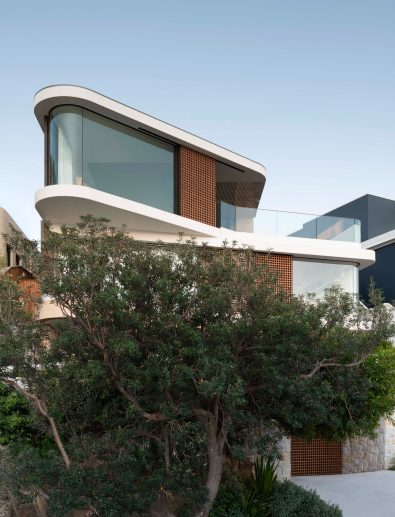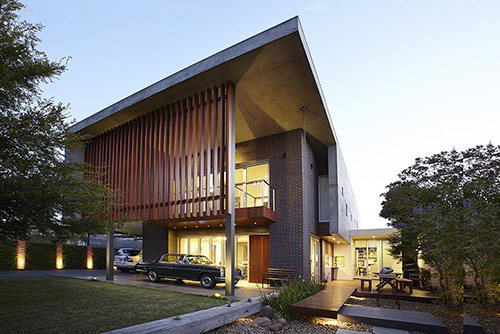Residential House Architect: Crafting Your Dream Home with Expert Design Solutions
Wiki Article
Exactly How Residential Architects Create Personalized Residences for Every Way Of Life
The process by which domestic designers style personalized homes is a nuanced interplay of comprehending client needs and equating those insights into functional living rooms. With detailed consultations and the usage of layout tools, designers catch the essence of their clients' way of livings, ensuring that each home shows individual values and goals.Understanding Customer Requirements

Effective communication is critical in this procedure. Engineers need to urge clients to articulate their way of livings, household dynamics, and future aspirations, ensuring that the layout shows their unique identification. By utilizing tools such as questionnaires, meetings, and visual studies, architects can collect useful insights right into the client's vision.
Furthermore, comprehending the context in which a home will exist is vital. Architects have to think about variables such as the website characteristics, neighborhood climate, and social influences that can affect the style. This alternative method enables the development of spaces that are not only cosmetically pleasing but likewise functional and lasting.
Ultimately, a deep understanding of customer needs allows engineers to create customized homes that improve the high quality of life for their owners, fostering a sense of belonging and comfort within their living atmospheres.
Layout Process and Collaboration
The style procedure in household design is a vibrant interplay of imagination and collaboration, where architects, customers, and numerous stakeholders work very closely to bring a vision to life. This iterative journey normally begins with a collection of conferences to develop a comprehensive understanding of the client's ambitions, choices, and way of life needs. Throughout these conversations, architects gather essential information, enabling them to conceive layouts that align with the client's vision.Complying with the initial assessments, the design phase develops with sketches, 3D models, and architectural makings. This aesthetic interaction acts as a tool for engineers to existing ideas, while also inviting client comments, guaranteeing that the final design reverberates with their expectations. Efficient cooperation with designers, specialists, and interior designers is important during this phase, as it makes sure that all functional aspects of the job are perfectly incorporated.

Incorporating Way Of Life Elements
Including way of living elements right into domestic style is important for producing areas that absolutely reverberate with the occupants. residential architecture homes. This process begins with comprehending the special demands, choices, and day-to-day regimens of the house owners. Engineers involve in thorough conversations to uncover how the individual or family members utilizes their room, whether for enjoyable visitors, seeking leisure activities, or looking for quiet retreat
Once these insights are gathered, engineers can customize layout features that improve daily experiences. Open floor strategies might be created for households that prioritize togetherness, while dedicated workspaces can be incorporated for those that work from home. Exterior locations, such as outdoor patios or gardens, can be emphasized for family members that appreciate outside activities or enjoyable.
In addition, versatility is a vital factor to consider; multi-functional spaces my latest blog post enable versatility as way of lives evolve with time. Customized storage services can likewise be incorporated to satisfy details organization needs, guaranteeing that the home continues to be clutter-free and useful. Eventually, by thoughtfully weaving way of living elements right into the architectural material, domestic engineers produce customized homes that not just satisfy visual desires however additionally substantially enhance the lifestyle for their clients.
Sustainable and Smart Layout
Smart and sustainable style increasingly plays an essential role in domestic style, as house owners look for to lessen their environmental influence while enhancing their living experiences. Designers are currently incorporating environment-friendly products, energy-efficient systems, and ingenious modern technologies to create homes that not only fulfill visual needs but also offer the world.Integrating renewable power resources, such as solar panels and wind generators, enables home owners to harness all-natural sources, significantly reducing reliance on traditional power grids. Smart home innovations further enhance sustainability by optimizing energy usage through automated systems that regulate cooling, heating, and lighting based upon tenancy and choices.
Moreover, using lasting structure materials-- like reclaimed timber, bamboo, and reused steel-- advertises a round economic climate, reducing waste and source consumption. Engineers likewise emphasize passive design principles, making certain homes are oriented for maximum all-natural light and air flow, thus lessening the demand for artificial cooling and heating.
In addition to ecological benefits, lasting and clever layout adds to the total comfort and health of homeowners. By prioritizing interior air high quality and natural environments, architects create rooms that promote health, enabling homeowners to prosper attuned investigate this site to their setting.
Settling and Applying Plans
Wrapping up and executing strategies is an important stage in the household design procedure, where the vision of a tailored home begins to emerge. This phase entails thorough attention to information, making certain that every aspect of the style is specifically articulated and ready for building and construction. residential architecture homes. Architects collaborate carefully with customers to assess last plans, addressing any kind of last-minute adjustments or worries, while making certain that all components line up with the home owner's way of living demandsAs soon as plans are completed, designers prepare comprehensive building documents, including comprehensive drawings and specifications that work as a blueprint for home builders. These papers detail materials, finishes, and installment methods, offering quality for contractors and subcontractors. Additionally, protecting needed authorizations and sticking to regional building codes is necessary, as it makes certain conformity and smooth project implementation.
By fostering a collective environment, engineers can ensure that the implementation straightens with the original vision. Inevitably, this vital phase changes ideas right into reality, laying the structure for a home that reflects the special find this way of living and preferences of its citizens.
Conclusion
In final thought, property engineers play a crucial duty in crafting tailored homes that provide to diverse lifestyles. Through precise understanding of client needs, collaborative design processes, and the combination of way of life aspects, architects guarantee that each home reflects individual choices.The procedure by which residential architects style tailored homes is a nuanced interaction of understanding customer demands and equating those insights right into useful living areas. Through comprehensive appointments and the use of layout tools, architects record the essence of their clients' way of livings, making certain that each home shows personal worths and goals. Designers need to motivate customers to verbalize their lifestyles, family members dynamics, and future aspirations, making sure that the design shows their unique identification.The design process in residential design is a dynamic interaction of creativity and partnership, where architects, clients, and numerous stakeholders work closely to bring a vision to life - residential architecture homes. With meticulous understanding of client demands, collective layout processes, and the combination of way of life components, architects make sure that each home reflects private choices
Report this wiki page